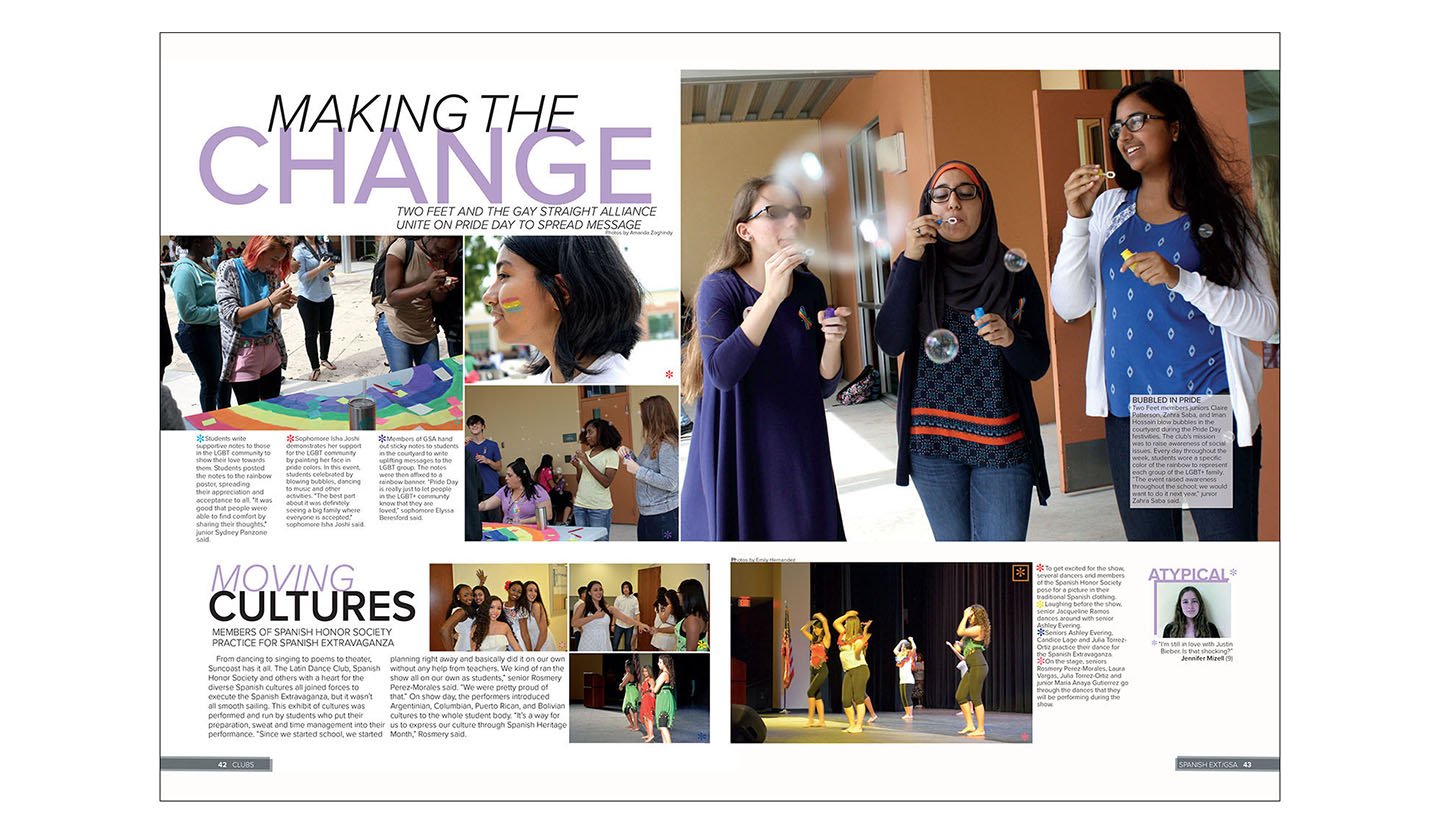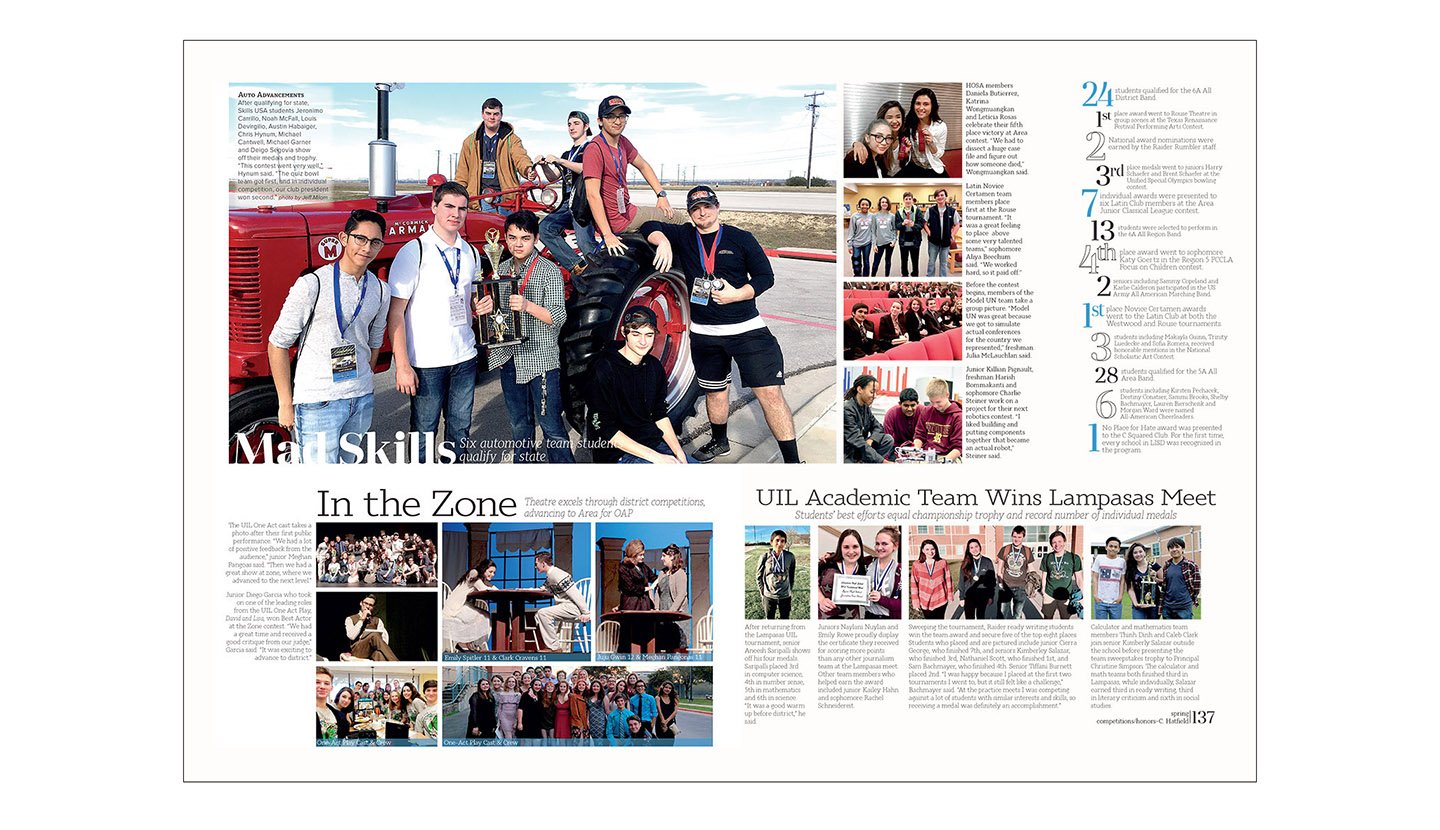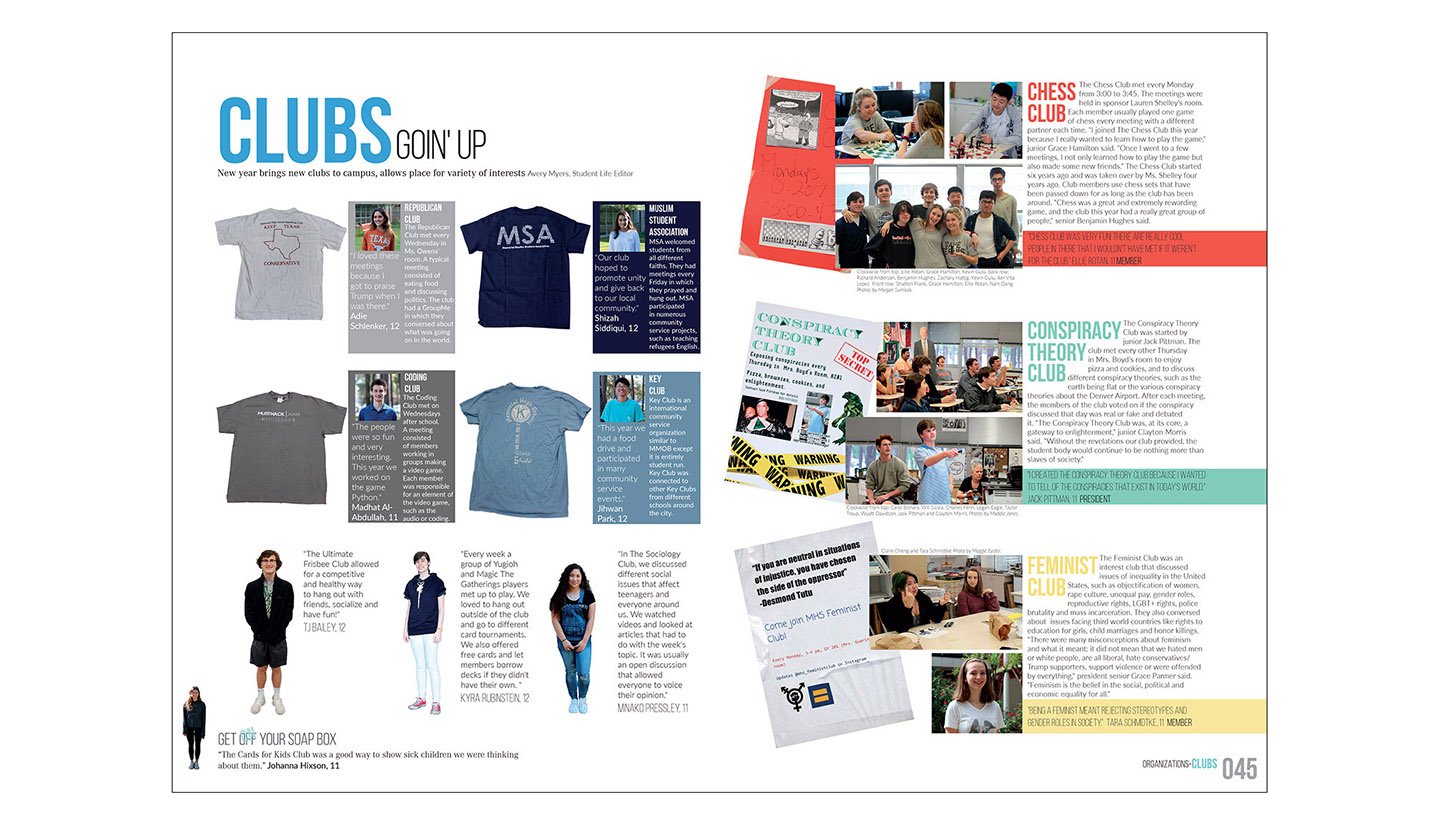
Oh, little clubs, how do I love thee? Let me count the ways. If you’re not feeling the love for small, niche groups, you’re missing out on a beautiful relationship. You can afford to give smaller organizations substantial coverage without breaking the bank; I mean, page count.
We all have those tiny clubs that confound us when it comes to coverage. It’s the club with a handful of students. Or the organization that’s been a school tradition for decades but does little more than create a T-shirt and have sparsely attended meetings. It’s important to include these groups in the yearbook, but it’s difficult to justify a full spread or provide meaningful coverage.

Blend, baby, blend
This is where creative thinking comes into play. Stop fretting about finding space for each group’s own spread or running boring meeting photos. Instead, use blended coverage to show some love to the small clubs. Blended coverage, also called umbrella coverage, mixes clubs, teams, classes or events by topic or date.
For organizations, the easiest way to blend is by topic. By focusing on a common connection, multiple organizations can share space on a spread while still presenting a cohesive design. For example, a “creative clubs” spread could include coverage of the art, photography, creative writing, graphic design, video game and coloring clubs. A volunteering spread could feature student government, National Honor Society, service groups and any other club that volunteers. Other potential topics include music practice, competitions, medical training, real world/future training and more.

An advantage of the blended approach is the quality of coverage. By focusing on a topic, you can gather better photos and quotes from the group. You’ll avoid meeting photos and instead spotlight activities and club involvement. Another benefit of blending is the design. Since it covers one topic, the spread is designed as a single unit. There is still a dominant photo with secondary photos, a story and secondary coverage. The group that is most active or participated in an interesting event could be the main story and picture. Smaller groups could be featured in secondary photos or in sidebars. For the elusive group that you have zero photos of, consider running mugs and quotes or a Q&A with a member, using a cutout photo. The story, of course, could feature one group or it could become alternative copy showcasing multiple groups. The alternative text could include quotes from multiple club members, Q&As or mini-stories about featured clubs.
If any of your groups involve a substantial number of students or are extremely active, this group could warrant its own space. But for smaller, less active clubs, the blending strategy saves space while still offering purposeful coverage.

Let's get really creative
The blended examples work well for busy groups, but not for less active clubs. Now, it’s time to get really creative. Virtually every club creates a T-shirt so why not have a T-shirt spread? This actually can turn into a cool showstopper, wow spread. Similarly, most clubs fundraise. Consider featuring students selling or delivering items, or run cutouts of the items sold with quotes from club members.

Another innovative topic is club fun or holiday parties. At the very least, clubs tend to have a Christmas party. Show up and take pictures of the holiday snacking, Christmas tree decorating and Secret Santa gift exchanges. In some schools, a few clubs have Halloween costume parties and Valentine’s Day card exchanges. Take advantage of all these festivities to elevate your club coverage.
Nothing in common
If you’re still stuck with groups that have nothing in common, you have two more options for blending coverage. One is to combine groups in a chronological book. Vista Ridge High School has more than 30 clubs but they only do three club spreads: a fall, winter and spring spread. They place clubs according to when each group is most active. (Note, they still give large groups like band, dance and theater their own space.)
The other option is to create separate packages for each club but share the same spread. In this situation, you could still make one group the dominant package, or you could give everyone equal space. In either version, make sure to use macro spacing to provide emphasis and separation.
With creative thinking and design planning, little clubs can receive much-needed attention and affection they deserve. All groups should receive love to the depth and breadth and height the yearbook can reach.


